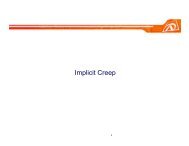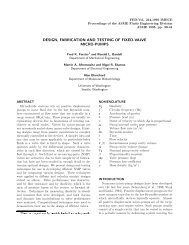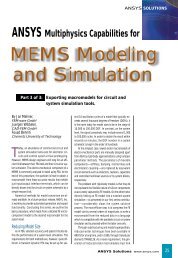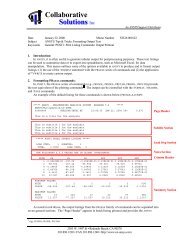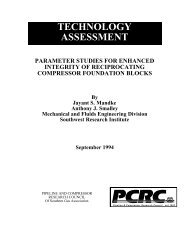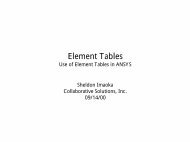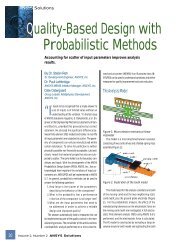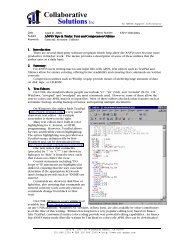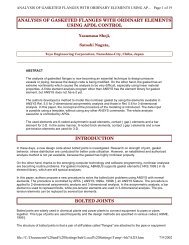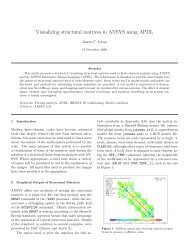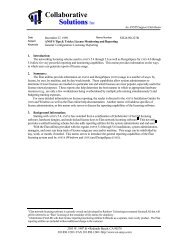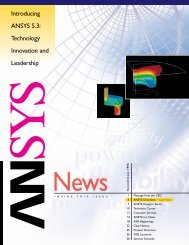anisotropic plasticity and failure prediction in wood ... - ANSYS Users
anisotropic plasticity and failure prediction in wood ... - ANSYS Users
anisotropic plasticity and failure prediction in wood ... - ANSYS Users
You also want an ePaper? Increase the reach of your titles
YUMPU automatically turns print PDFs into web optimized ePapers that Google loves.
ANISOTROPIC PLASTICITY AND FAILURE PREDICTION IN WOOD COMPOSITES Page 8 of 22<br />
Size Effects<br />
The Weibull weakest l<strong>in</strong>k theory postulates that for brittle materials, larger specimens are more likely to fail at<br />
lower stresses due to the <strong>in</strong>creased probability of a flaw <strong>in</strong> that larger specimen volume. Barrett (1974) found this<br />
to be true for the ultimate tension stress perpendicular-to-gra<strong>in</strong> <strong>in</strong> Douglas fir. This concept was used to develop<br />
lumber strength design values for the Canadian st<strong>and</strong>ard for Eng<strong>in</strong>eer<strong>in</strong>g Design <strong>in</strong> Wood (O86.1, 1995). It has<br />
also been used to determ<strong>in</strong>e the strength of timber rivet connections listed <strong>in</strong> the st<strong>and</strong>ard (Foschi <strong>and</strong> Longworth,<br />
1975).<br />
The probability of brittle <strong>failure</strong> based on a two-parameter Weibull distribution is a function of the stress<br />
distribution over the volume of material:<br />
file://C:\Documents%20<strong>and</strong>%20Sett<strong>in</strong>gs\beh\Local%20Sett<strong>in</strong>gs\Temp\~hhC936.htm<br />
7/9/2002



